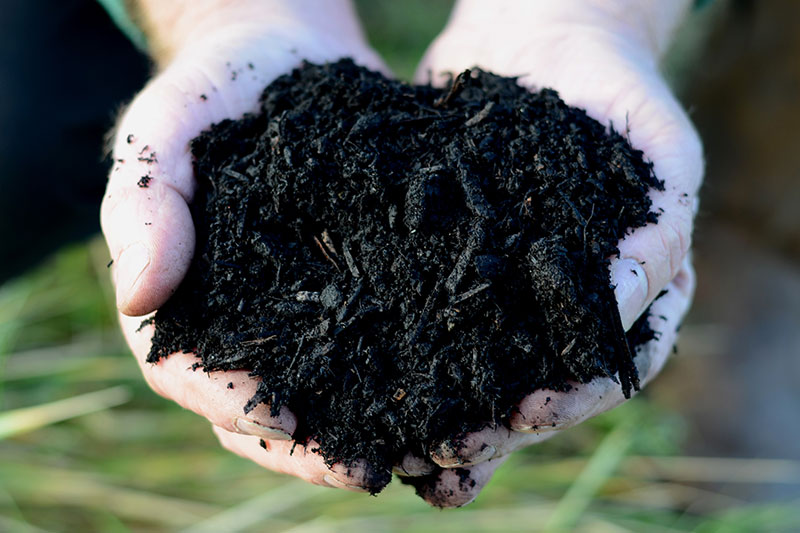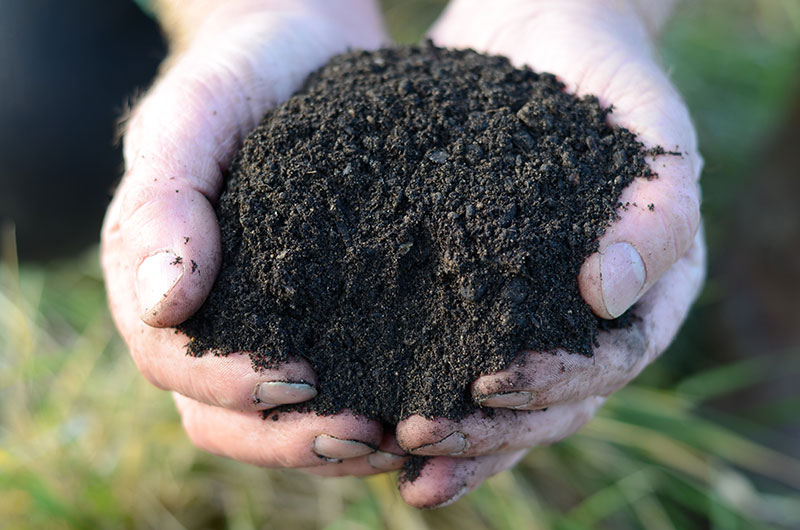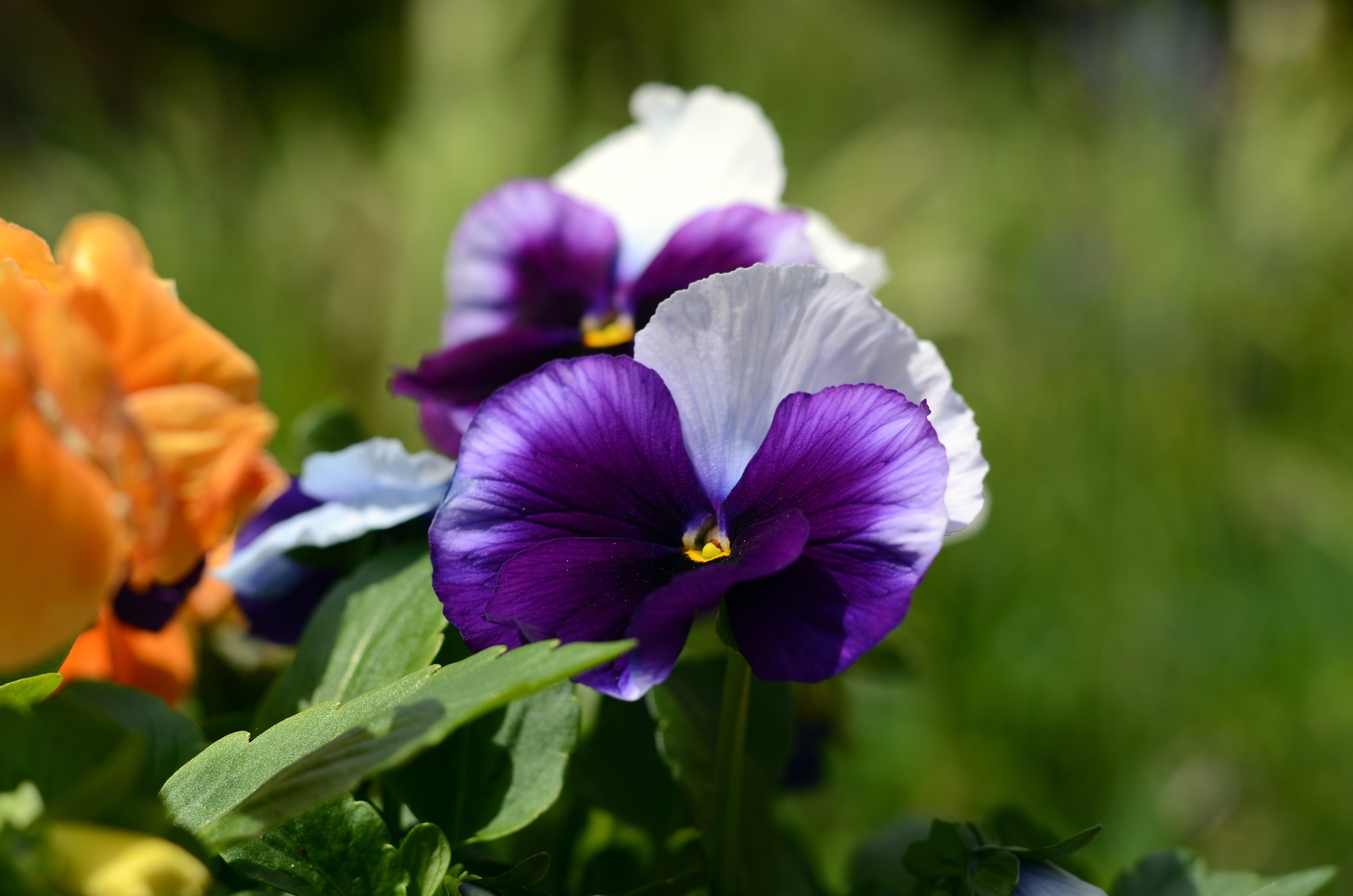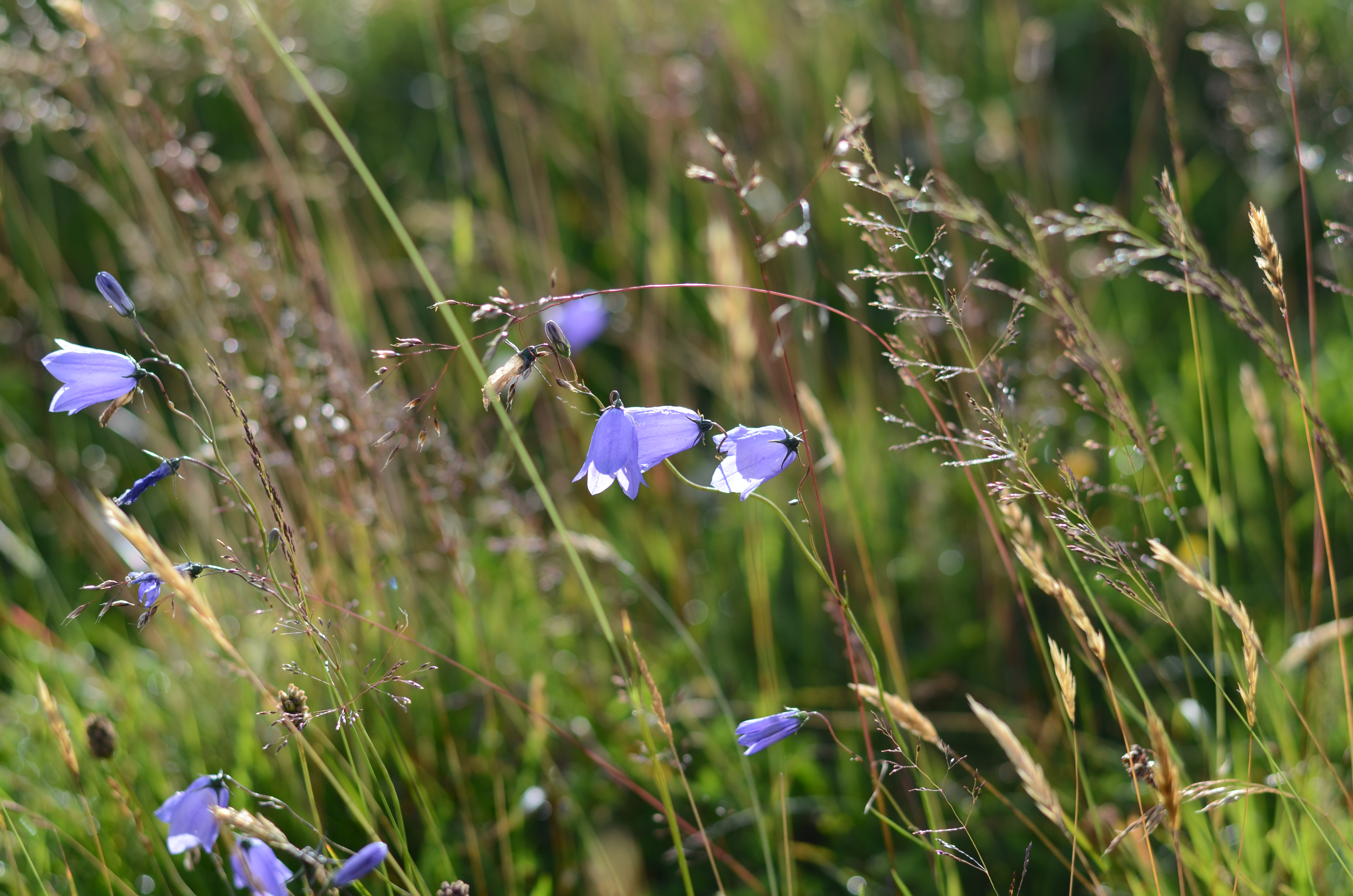Happy May everyone! This will be a busy month in the garden as the days continue to lengthen and grow warmer. Here at Field Compost, we are as busy as ever, with lots of local and national deliveries keeping us on our toes. We are also prepping for the South Suffolk show, Hadleigh show, and Suffolk show that we will be attending this month.
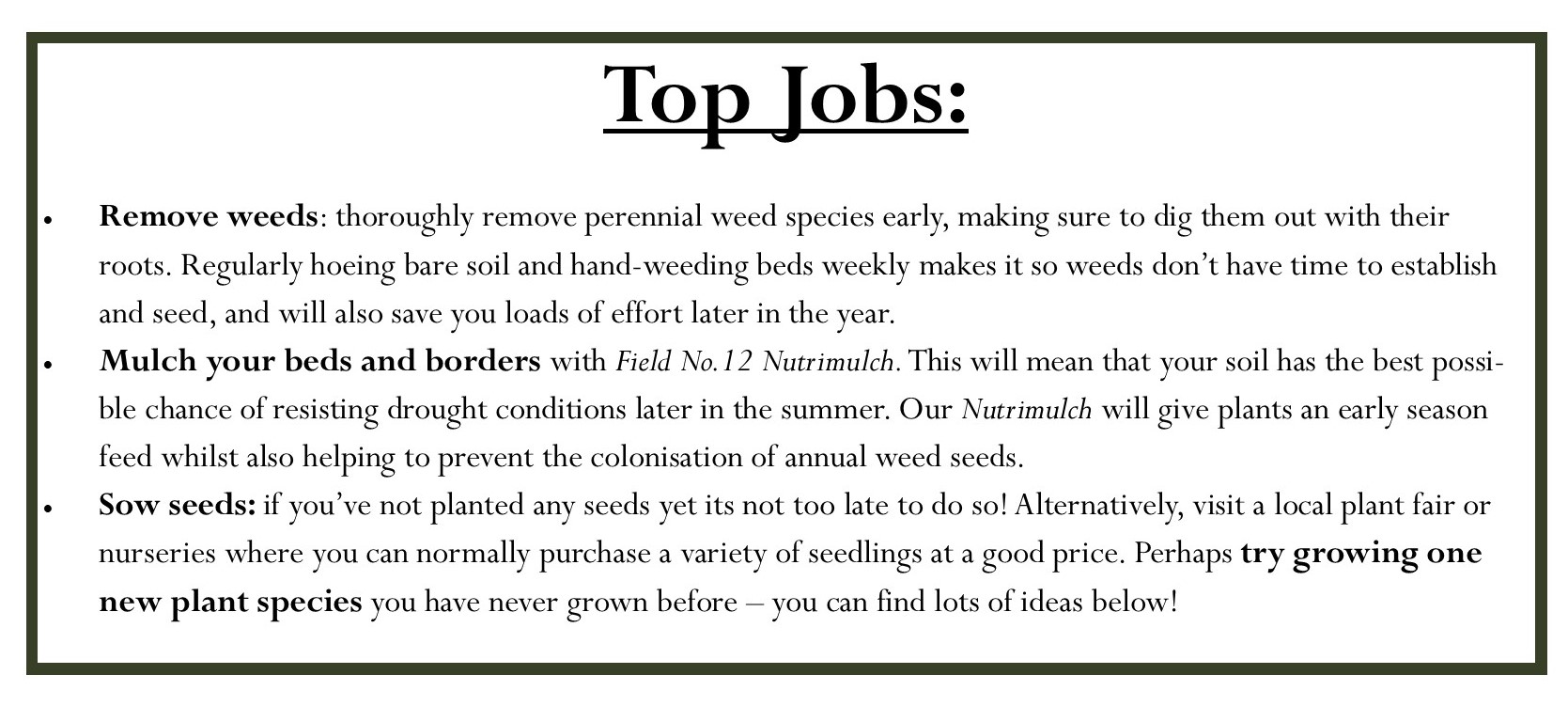
General maintenance:
- Water plants early and late in the day to get the most out of your water, it is also best to use recycled water using water butts.
- Use a stiff-bristled brush or pressure washer to remove algae from paths, also use a pressure washer to remove dirt and algae from walls, paving and patios.
- Clean out and scrub bird feeders regularly to maintain hygiene.
Lawns:
Maintenance:
- If you want to keep your lawn neat, get back into a regime and mow your lawn weekly. Although trimmed lawns still create valuable wildlife habitats for many invertebrates, consider trying No Mow May. Step away from your lawn mower and let the wildflowers in your lawn grow up to bloom and provide pollen, nectar and shelter for insects and other wildlife.
- Use our No.4 Organic Fine Grade Lawn Dressing to give your grass a boost! This nitrogen-rich dressing will increase your lawn’s vigour and help to prevent weeds and moss from establishing.
- Define lawn edges using a half-moon edging iron or spade. Create a 7.5cm ‘gutter’ around the lawn to prevent grass from creeping from the lawn into borders.
New lawns:
- Sow new lawns and re-seed bare patches in early May. If you do not do this now, wait until September. Prepare the ground for sowing by forking over, weeding, levelling, and lightly firming. Use our Field No.4 Lawn Dressing to cover the seeds after sowing to protect them from birds and washing away.
- A flush of weed seedlings will appear in a newly-sown lawn – this is nothing to worry about and they will disappear once regular mowing begins.
- Water new lawns (either from turf or seed) in dry spells to make sure they establish well.

Houseplants:
- Pot up houseplants showing signs of being rootbound or that have become top heavy. Use our Field No.23 Professional Potting Blend compost to repot these plants and to top dress large containers.
- Start feeding houseplants with liquid fertiliser. Continue this through to autumn.
- Also water your houseplants more regularly as temperatures warm, but check soil moisture before watering.
Greenhouse:
- Open vents and doors on warm days to increase ventilation on warm, sunny days. Close them in evenings as the nights can still be cold.
- Damp down the greenhouse floor regularly on hot days to increase humidity levels, this will benefit plant growth and reduces the risk of pest problems, e.g., glasshouse red spider mite.
- Check plants at least every few days to see if they need watering, but seedlings will need daily attention.
Flowers:
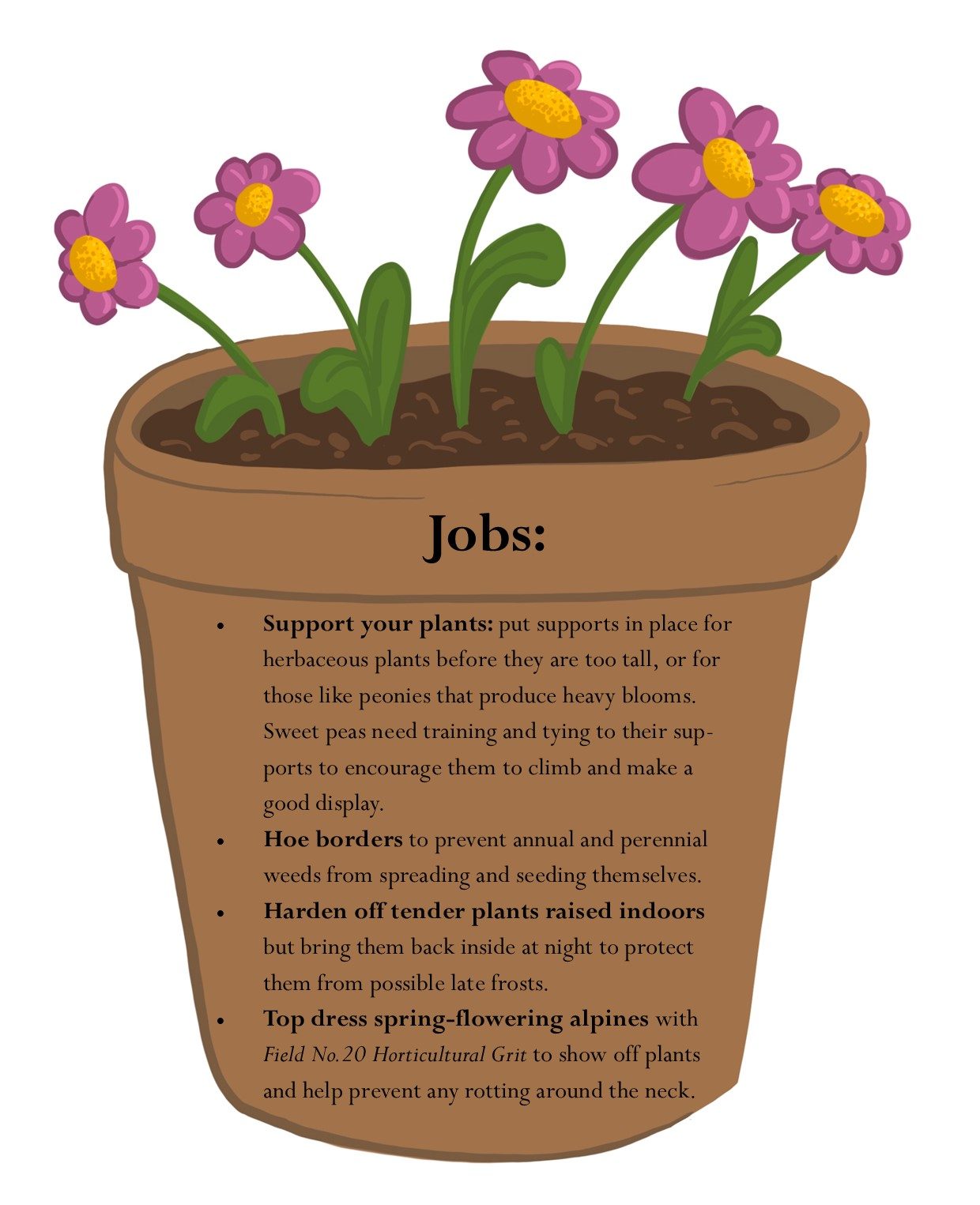
To plant:
-
-
-
-
- Continue sowing annuals to add colour to gaps and borders for colour from August into autumn:
- Sunflowers: Seeds can be sown direct outside now, or into pots or multi-celled trays for planting out later. Use Field No.23 Potting compost for trays or use Field No.23 to create a planting pocket if sowing direct outside.
- Cornflowers: May is the final month to sow these to ensure blooms this same year.
- Zinnias: These can be sown outdoors in May; scatter seeds over moist, well-prepared soil and cover with a thin layer of No.23. Zinnias also work well in pots filled with No.23.
- Nasturtium: these are versatile for filling in gaps and borders, growing in pots, or in seed trays to transplant later. Use Field No.23 in trays or to create a planting pocket if sowing direct.
- Sweet peas: these can be planted out but harden off before. They like moisture so mulch with Field No.12 Nutrimulch to add extra moisture retention.
- Wildflowers: use our No.30 Wildflower soil for direct sowing of wildflower species from seed.
- Continue sowing annuals to add colour to gaps and borders for colour from August into autumn:
-
Fruit & Veg:
Jobs:
-
-
- Earth up potatoes. Potatoes planted last month can be earthed up in May; draw up soil on both sides of the plant, covering shoots with soil as they appear. This protects early shoots and foliage from frost damage. It also ensures that developing potatoes aren’t exposed to light, which will turn them green and poisonous.
- Harvest crops. Start enjoying the fruits of your labour this month by harvesting crops like lettuce, cabbage, spinach, spring onions, broccoli, rhubarb, beetroot, and peas.
- Start hardening off tender young plants, e.g., tomatoes and courgettes, ready for planting out in mild areas.
- Thin out seedlings, like beetroot and carrots, from earlier sowings. This will ensure that you get healthy, strong-growing plants. Cover carrots with fleece afterwards, as thinning out releases a smell that attracts carrot fly.
-
To plant:
It is so rewarding to grow your own food and can be easily done with kids or without a garden! We have been planting herbs and veg seeds in odd pots, like old tubs or Quality Street tins.
We recommend using our Field No.23 Professional Potting Blend compost for planting in pots and containers. This No.23 potting compost can also be used to create a planting pocket in the ground if sowing direct.
-
-
- Plant out young plants sown last month, e.g., celeriac, squashes, leeks, pumpkins, and marrows. These do best in No.23, but Field No.15 Vegetable Planting Topsoil is good too. Also plant out any remaining potatoes; these like to be planted in warm soil and containers, so protect any top growth if there is frost.
- This may be the last chance to sow sweetcorn to give the plants plenty of time to grow and ripen. Sow in pots or trays indoors and plant out when seedlings are large enough to handle.
- Tomatoes. Either buy plants to grow in the greenhouse or plant out in the veg plot at the end of the month.
- Cucumbers. These do best in the greenhouse, but some newer varieties have been bred to tolerate outdoor conditions. Sow in multi-celled seed trays or individual pots and pot on when seedlings are large enough to handle.
- Carrots. These are easy to grow; sow in shallow drills of well-prepared, stone-free soil, or in pots. You can sow them outside if the weather and the soil has warmed up.
- Melons. These are tender so should be sown indoors.
- Strawberry runners. This is the last chance to sow plant strawberry runners for a chance to crop this year. These can be planted outsider now, and if you keep them well-watered in coming weeks you should get a small harvest.
- Courgettes. These can be sown direct outside in well-prepared soil, or in pots/multi-celled trays for transplanting later. Courgettes are hungry crops so feed them weekly once start flowering.
-
Trees & shrubs:
Jobs:
-
-
- Check for nesting birds before clipping hedges; it is nesting season so always check for signs of activity before getting out pruners.
- Cut back tender shrubs and sub-shrubs, e.g., penstemon, caryopteris and fuchsia, after danger of frost has passed.
- Tie in climbing and rambling roses as near to horizontal as possible. This restricts sap flow, causing more side-shoots to grow along the length of the stem, thus more flowers will be produced.
-
To plant:
-
-
- Pot-grown fruit trees and shrubs, e.g., fig trees, citrus trees and gooseberries can be planted all year round. Use our Field No.21 High Quality Planting Topsoil.
-
-
-
